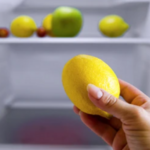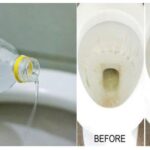Why Your Shower Head Gets Calcium Build-Up
Water temperature: Warm or hot water can accelerate the precipitation of minerals, leading to a faster buildup of calcium deposits on the shower head.
Usage frequency: The shower head is frequently exposed to water and humid air, providing an ideal environment for calcium to adhere to its surface. Without regular cleaning, calcium deposits will accumulate over time and result in a stubborn buildup.
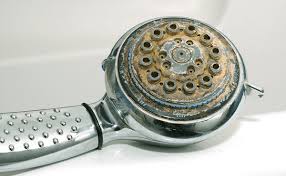
The shower head is used in a humid environment, which contributes to calcium buildup over time.
Shower head design: The nozzles, water outlets, and intricate design details of the shower head can create hiding spots for calcium and magnesium present in the water, making it easier for these minerals to accumulate.
Methods to Remove Calcium Build-Up from Your Shower Head
Using Vinegar
Vinegar contains acetic acid, which is an effective cleaning agent and can help dissolve calcium buildup. Here is a step-by-step guide on how to use vinegar to clean your shower head at home:
Step 1: Dilute vinegar with filtered water in a 1:1 ratio.
Step 2: Using a spray bottle or a spritzer, apply the vinegar solution to the areas of the shower head or stainless steel faucet with calcium buildup.
Step 3: Allow the vinegar solution to soak for about 15-30 minutes to soften the calcium deposits.
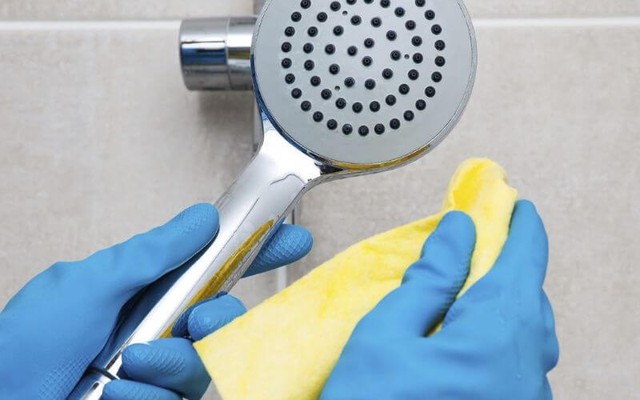
Using vinegar to clean the shower head.
Step 4: After the waiting period, use a damp cloth or a soft brush to gently wipe the surface of the shower head or stainless steel faucet. The calcium deposits should come off easily.
Step 5: Rinse the treated surface with filtered water to remove any remaining calcium deposits and vinegar residue.
Note: Before applying the vinegar solution, test it on a small area of the stainless steel surface and accessories to ensure it does not cause any damage or scratching.
Do not use vinegar directly on sensitive surfaces such as natural stone, chrome-plated surfaces, or plastic. Vinegar’s strong acidic properties can cause damage. When using vinegar, ensure proper ventilation to avoid inhaling the fumes from the solution.
Using Lemon and Salt Mixture
Step 1: Prepare one lemon and a regular amount of salt.
Step 2: Cut the lemon into small pieces and scrape a small amount of lemon peel to extract the juice.
Step 3: Mix the lemon juice with salt to form a paste.
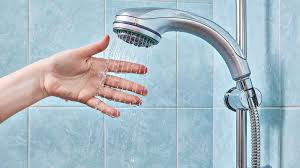
Using a mixture of lemon and salt to clean the shower head.
Step 4: Apply the lemon and salt mixture to the areas of the shower head with calcium buildup.
Step 5: Allow the mixture to work on the calcium deposits for about 15-30 minutes.
Step 6: Use a soft brush or cloth to gently scrub the treated area to remove the softened calcium deposits. Then, rinse the shower head with clean water to wash away the calcium deposits and the lemon-salt mixture.
Note: Avoid scrubbing too hard to prevent scratching the surface of the shower head. Always test the lemon and salt solution on a small area first to ensure it does not damage the shower head.
Using Toothpaste
Step 1: Prepare a non-gel toothpaste (without small crystals) and a soft brush or cloth.
Step 2: Test the toothpaste on a small area of the shower head to ensure it does not harm the surface.
Step 3: Apply a moderate amount of toothpaste to the areas of the shower head with calcium buildup. Avoid applying too much to prevent creating a thick layer of toothpaste.
Step 4: Let the toothpaste work on the calcium deposits for about 10-15 minutes.
Step 5: Use a soft brush or cloth to gently scrub the treated area to remove the softened calcium deposits.
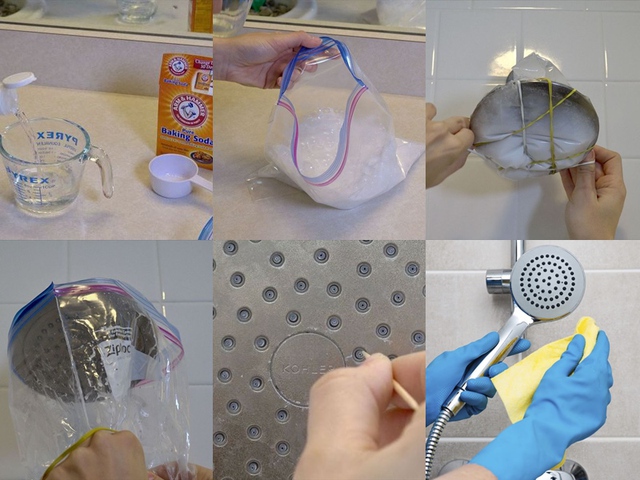
The shower head regulates the water flow in the bathroom.
Step 6: Rinse thoroughly with clean water to remove any remaining calcium deposits and toothpaste residue.
Note: Avoid scrubbing too hard to prevent scratching the surface of the shower head.
Using Baking Soda
Step 1: Take some baking soda.
Step 2: Mix the baking soda with a small amount of water to create a paste.
Step 3: Apply the baking soda paste to the areas of the shower head with calcium buildup.
Step 4: Let the baking soda solution work on the calcium deposits for about 15-30 minutes.
Step 5: Use a soft brush or cloth to gently scrub the treated area to remove the softened calcium deposits.
Step 6: Rinse the shower head thoroughly with clean water to remove any remaining calcium deposits and baking soda residue.
Note: Avoid scrubbing too hard to prevent scratching the surface of the shower head. Always test the baking soda solution on a small area first to ensure it does not damage the shower head.
The Magic of Lemons: 6 Surprising Benefits of Placing Halved Lemons Around Your Home
No need to break the bank or resort to harsh chemicals to refresh your living space. With just a few halved lemons, you can easily and effectively transform your home. Discover the surprising power of lemons and explore creative ways to use them throughout your home with these simple yet effective tips.



























